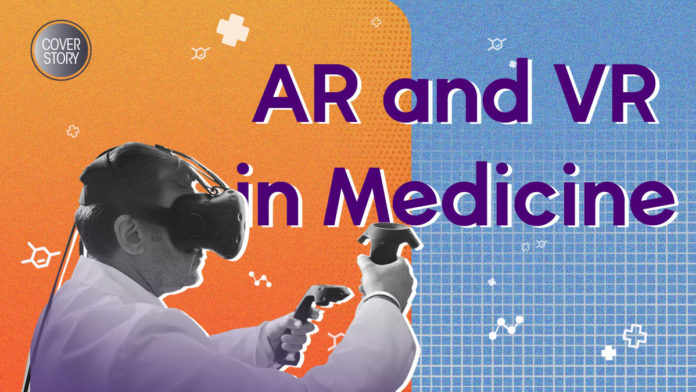At the forefront of the technological revolution in medicine are AR and VR.
Technology marches ever onward, and while some of the latest developments in tech have to do with exploration and communication, another very important aspect of society is improving thanks to tech, and that’s healthcare. While increased connectivity has assisted in the ability of healthcare providers to see patients remotely, other changes, such as developments in AR and VR, are helping improve the lives of countless people in need of medical care.
While many people are familiar with VR thanks to the widespread adoption in gaming and entertainment, AR might need a bit of an explanation to differentiate the two. While VR is a complete world on its own, placing the viewer in a completely manufactured world, AR is generated sensory content laid on top of the real world. A great example of this is the Pokemon Go game from some time back. Your phone takes pokemon and lays it onto the real world through the use of your phone’s camera.
While phones are a great way for people to experience AR and VR, there is of course
specialized hardware to handle a multitude of AR and VR applications. These developments in turn go hand in hand with the increased connectivity and low latency brought about by 5G, terrestrial, and satellite connectivity.
One of the immediate uses is better remote consultation. While cameras and telemedicine are now widespread and as simple as logging into an app, a phone camera and voice still aren’t all that personal. We can miss some cues that could otherwise lead to a more effective consultation. Imagine then being able to put on a simple headset, and getting instantly teleported to a virtual doctor’s office, and being face to face with your doctor, in 1:1 space. With the right technology, we can regain the connection that a basic webcam and headset can’t deliver.
While the impact of this might not be all that apparent if you’re talking about a call from your home in QC to the doctor in BGC, imagine a particularly tricky case here in the Philippines getting a more personal consultation from a world expert half the world away. Or how much more comforting it would be for a pediatrician to connect with their patient across oceans. Panel consultations would also be simpler. The act of looking at whoever is speaking, something we take for granted in real life, makes talking in groups much less fatiguing and can be regained in a virtual setting.
In delivering quality healthcare, there’s no substitute for training. Unfortunately, it can be quite difficult to get the exact circumstances right.
The right patient with the right ailment, at the right time, in the right hospital, and the right doctors can be difficult to line up, particularly with less common cases. Virtual reality can eliminate that difficulty. Imagine getting as many tries to complete a complex surgery with no risk to a live patient, and imagine giving that kind of training to as many doctors as have access to the technology. With developments in robotics, realistic feedback can be delivered right to the surgeon in training, making the whole process even more effective as a learning tool. From there, it’s a quick leap to performing surgeries remotely through a combination of VR and a low latency data connection.
AR can also deliver improvements to the quality of life of many patients requiring care. Today, being able to virtually try on frames for your glasses a world away is reasonably commonplace. It’s a simple matter of facial recognition and scaling the virtual glasses to fit. But there’s more.
For those squeamish about getting blood tests, the whole process is now easier with technology that does a real time scan of a patient’s arm and projects an image of the veins under the skin, so nurses can have an easier time getting the needle in correctly in the first try.
Scaling this up and a patient’s MRI or CT Scan can be overlaid right atop the patient when seen through a headset, greatly increasing the ease of procedures like minimally invasive biopsies and making diagnostic procedures that much simpler and more effective. Imagine humanitarian medical aid being delivered remotely by experts
that don’t have to leave their own hospitals or front line care given by doctors that don’t have to enter dangerous war zones. Imagine all the lives that could be saved.
Procedures can be done using a digital twin of a patient’s organs, allowing doctors to better visualize and execute procedures in the real world. On top of this, doctors with different specializations can get information that’s specifically relevant to them, as their colleagues viewing the same patient get their own relevant information via their own overlays.
AR and VR are groundbreaking in their abilities to allow healthcare professionals to better visualize their patients’ conditions, illnesses, and imagery to get on with the diagnosis or treatment. It also opens the doors for remote procedures and world-class medical care as long as there’s an internet connection and a bit of specialized hardware. While that might seem like a lot, it’s certainly faster and more convenient than putting up an entire hospital.
Words by Ren Alcantara
Also published in Gadgets Magazine March 2021 Issue
